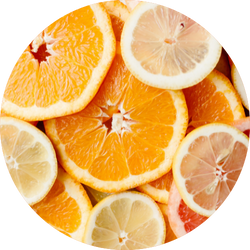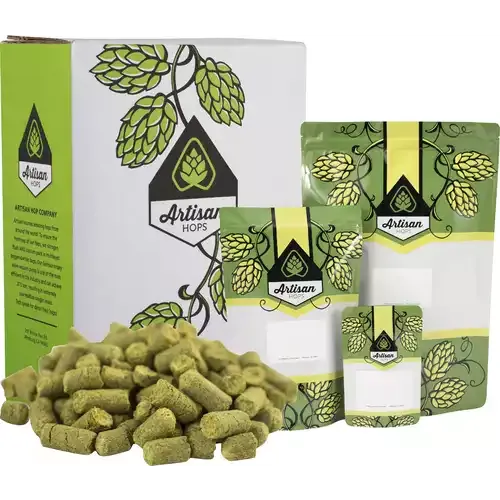
The Sticklebract hop variety originates from New Zealand, bred to address issues arising from Black Root Rot during the mid-20th century. It was developed in the 1970s through open pollination of First Choice by the New Zealand Horticultural Research Center at Riwaka and released in 1972. This dual-purpose varietal was created to respond to the need for a high alpha bittering hop that would be resilient in the face of prevalent root diseases.
Sticklebract has a unique flavor and aroma profile, primarily deriving its intriguing notes from high selinene and myrcene. This combination produces a distinct English, piney-citrusy bouquet perfect for both bittering and late hop additions in the brewing process.
Sticklebract hops are great in India Pale Ales, Pale Ales, English Bitters, Pilsners, and Amber Ales.
| Usage: | Dual-Purpose |
| Country of Origin: | New Zealand |
| Hop Growers Code: | SBR |
Where To Buy Sticklebract Hops
Sticklebract Flavor And Aroma
Sticklebract is a dual-purpose hop that is often described to have the following aroma characteristics:

citrus

pine
Sticklebract Hop Oil Breakdown
Hop oils can vary from year to year and farm to farm but based on our research, here are the typical values we have seen reported. This information comes from various hop farms, The Hop Aroma Compendium, and For The Love Of Hops.
| Alpha Acid % (AA) Alpha acids are what is isomerized when boiling to create bitterness in beer. | 13% – 14.2% |
| Beta Acid % Beta acids are what give hops their more aroma and flavor compounds. | 7.5% – 8.5% |
| Alpha-Beta Ratio This ratio of alpha acids to beta acids determines how quickly bitterness fades during aging. Lower ratios are common for aromatic varieties. | 1:1 – 3:1 |
| Co-Humulone as a % of Alpha Higher numbers are said to impart a harsher bitterness. | 40% – 45% |
| Total Oils (mL/100g) With more total oils, typically comes a more complex hop profile but these are highly volatile compounds. | 0.76mL – 1.72mL |
| Myrcene green, resinous | 51% – 64% |
| Humulene woody, piney | 8% – 11% |
| Caryophyllene woody | 3% – 6% |
| Farnesene floral | 4% – 4.6% |
| Other Oils: Includes beta-ionine, beta-pinene, limonene, linalool, geranoil & selinene | 0% – 72% |
| Hop Storage Index (HSI) The HSI indicates the percent of alpha and beta acids lost after 6 months of storage at room temperature (68°F or 20°C). | Retains 60%-70% alpha acid after 6 months storage at 20ºC (68ºF). |
| Hop Storage Index (HSI) Rating | Fair – Good |
Sticklebract Hop Substitutions
Replacing one hop for another is seldom straightforward but sometimes you don’t have the right hop or the right quantity of hops for the beer you want to make. For those situations, we have made a comprehensive list of hops to substitute on brew day.
These substitutions aren’t perfect as hop chemistry is pretty complex.
We wanted to make this list of substitutions with varietals that are easy to find when possible. For Sticklebract, we recommend substituting with the following hops:
Beer Styles
For the most part, any hop could have a place in just about any beer style. Based on popular beers, historical usage, and our own preferences, we would recommend using Sticklebract for IPA, New England IPA, Pale Ale, Wheat Beer, Golden Ale. That being said, experiment and see what works best for you.
References
https://www.hopslist.com/
https://www.ars.usda.gov/
https://www.brewersassociation.org/
https://www.barthhaasx.com/
https://www.yakimachief.com/
Hieronymus, Stan. For The Love of Hops. Brewers Publications, 2012
The Hop Aroma Compendium. 2012


